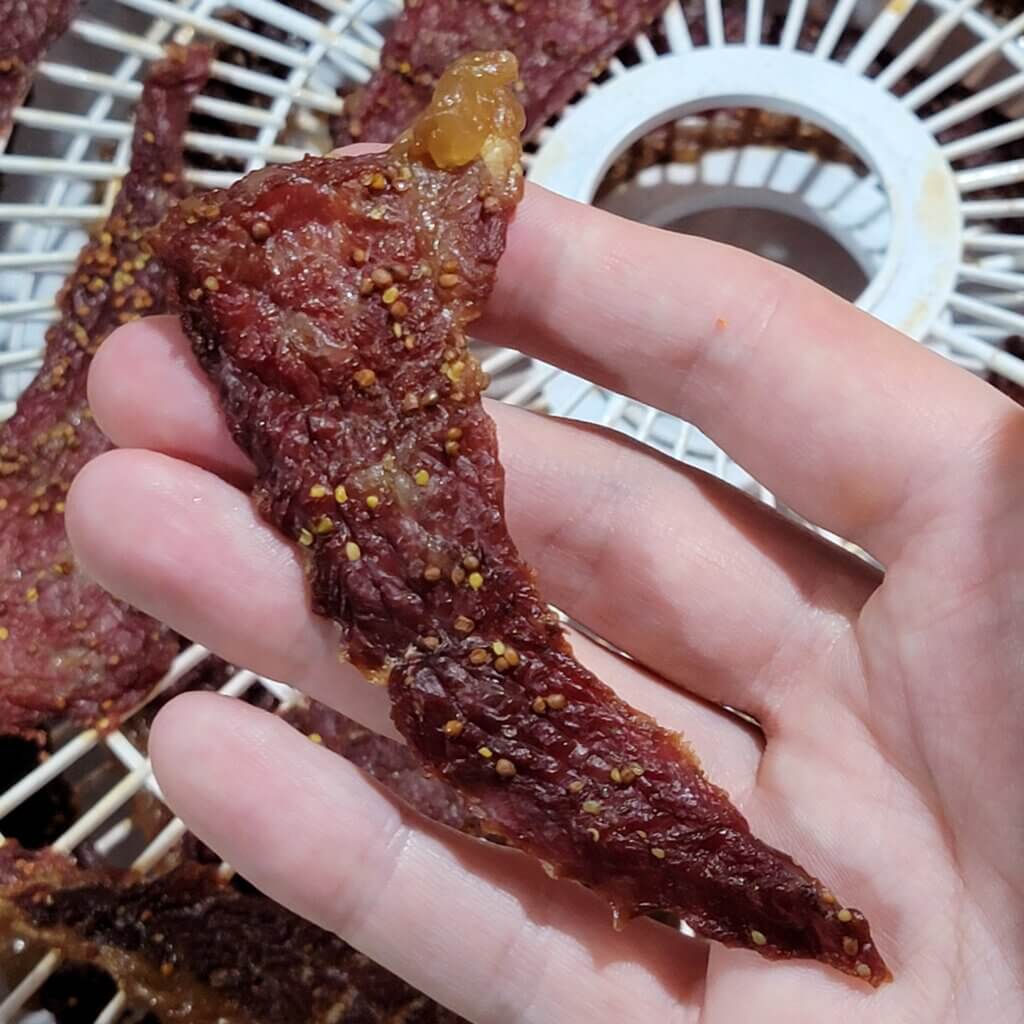Corned Beef Jerky
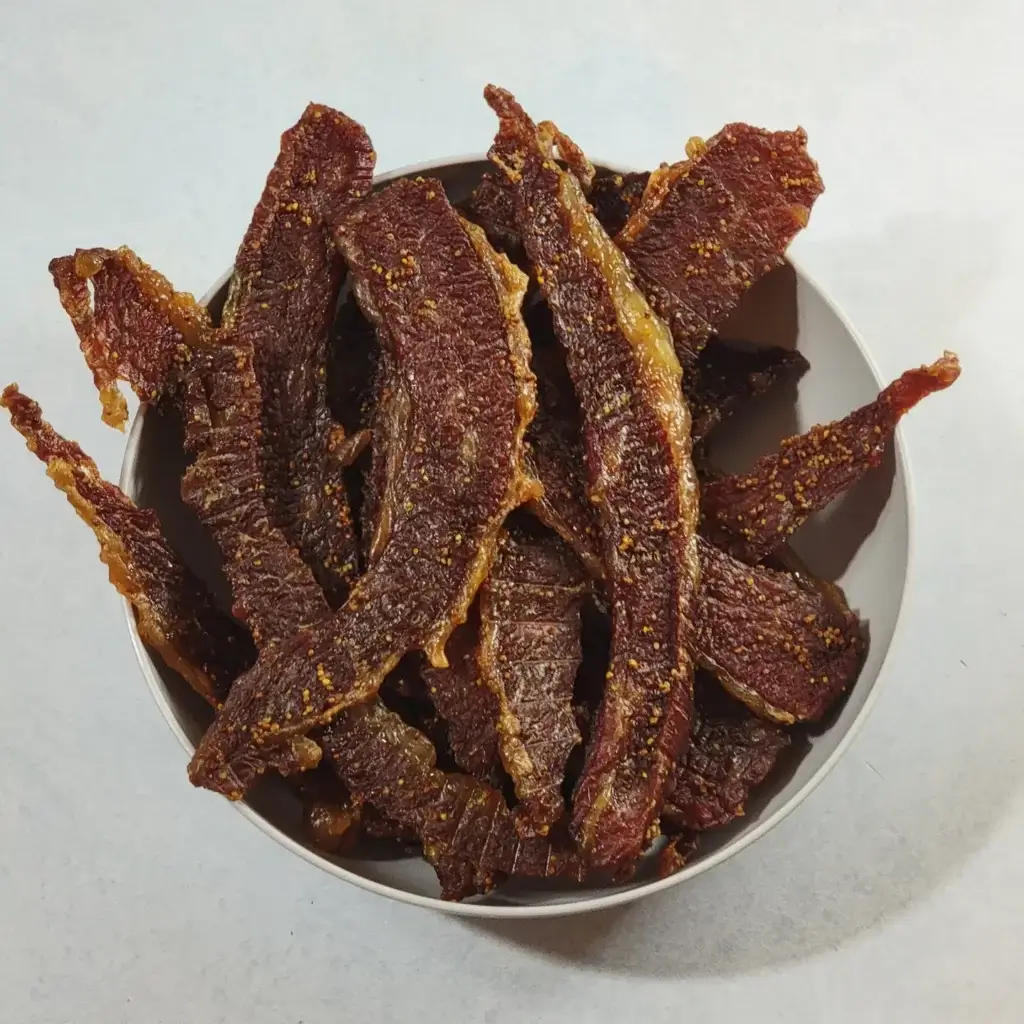
The week after St. Patrick’s Day in the US Midwest, the grocery stores will be practically giving away corned beef. If you happen to make your own corned beef, you might be inclined to pass it by, but I’m always buying beef roasts on sale to make into beef jerky. Why shouldn’t I make some with the corned beef?

You’ll want to rinse it off really well, and let it soak in cold water for a while to leach out some of the salt (potentially with a water change or two). Pat it dry, and think carefully about your options. Most people will say that you should trim off as much fat as possible for making beef jerky, and they would be right—if you’re trying to create a shelf-stable product. But what if I told you that you didn’t have to listen to them? Fatty beef jerky is one of my greatest guilty pleasures, particularly right out of the dehydrator, still warm. If you do decide to leave some, or all, of the fat on, be sure to store the jerky in the fridge.
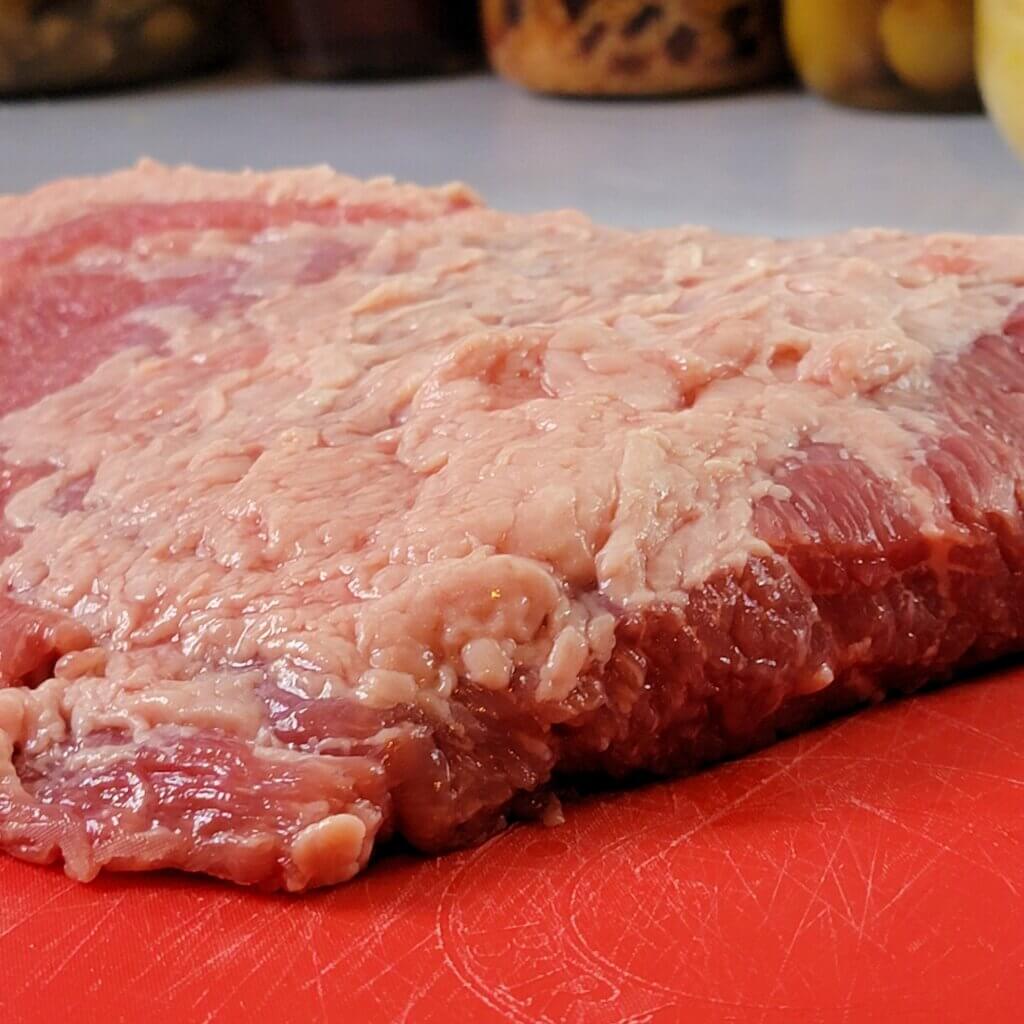
Once you’ve trimmed—or at least ogled—your beef, set it in the freezer for 30 minutes. This helps firm it up for slicing. Slice into roughly 1/4″/6mm thick slices against (perpendicular to) the grain of the meat. Brisket is made of long muscle fibers that would be really hard to bite through when dried.
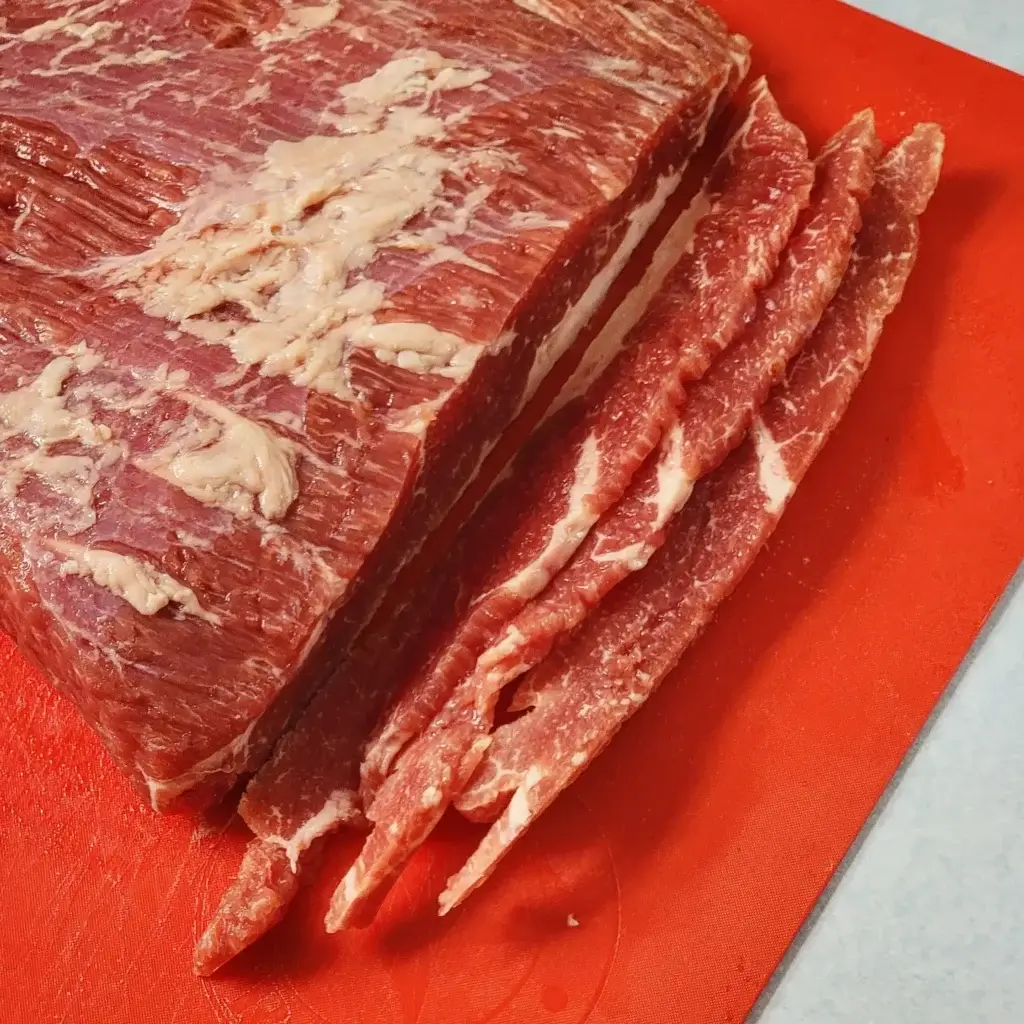
You could dry this as-is, since the meat is basically pre-seasoned via curing, but I don’t like my jerky to be one-note. I subscribe to the wet-marinade method, which ends up as something of a glaze* once fully dehydrated. I also like my jerky a little bit sweet and salty, so I made a simple marinade that compliments the source material well.
For a 2.5lb/1kg corned beef brisket:
- 6 Tbsp brown sugar
- 3 Tbsp shoyu/tamari -OR- water
- 2 Tbsp whole-grain mustard
Note that I have shoyu -OR- water above, because the corned beef is already pretty darn salty. If you want to cut down on the saltiness of the final jerky, just use water to help moisten everything, or some combination of water and shoyu.
Massage the marinade into the meat and let it sit for a half hour or so. This doesn’t need to marinate overnight, as it’s mostly to serve as a glaze.
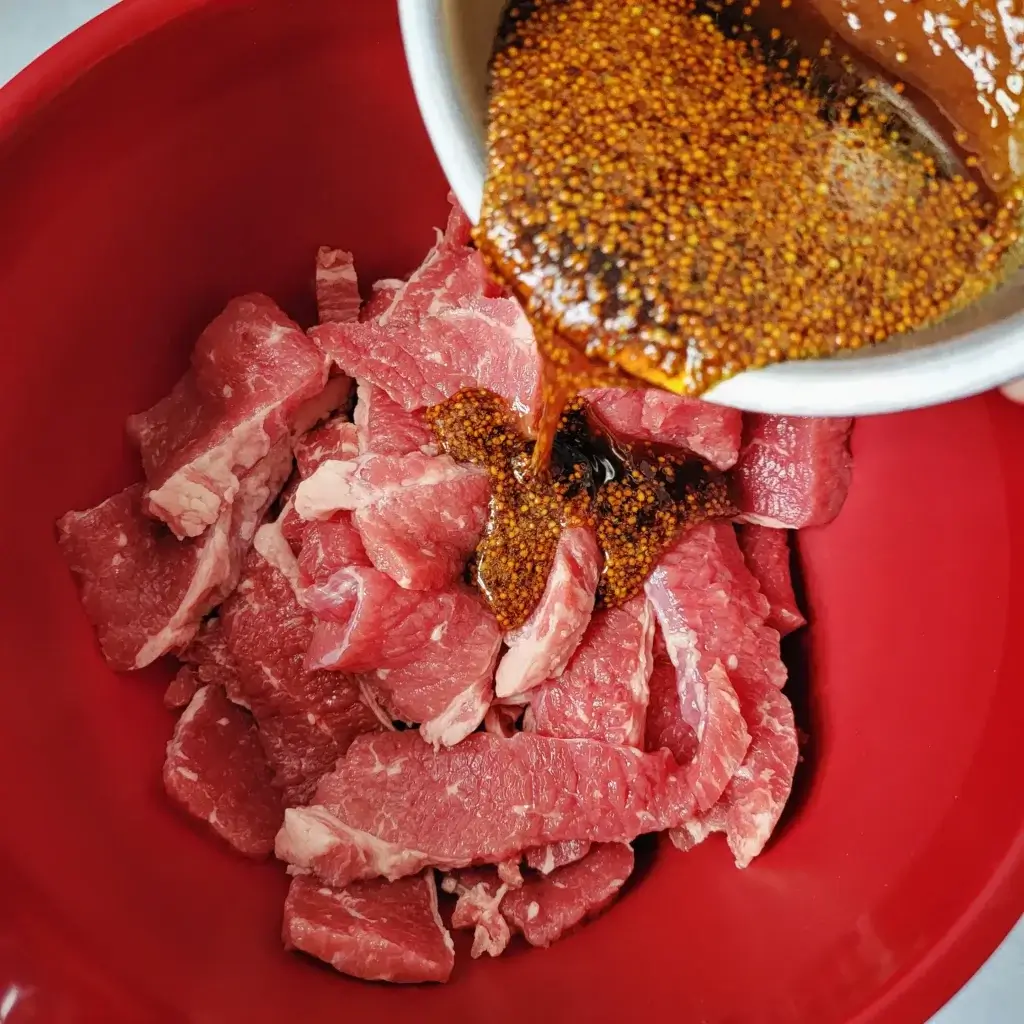
If you have a dehydrator, dry at 160°F/71°C for 4-6 hours, possibly longer depending on how dry you like your jerky. If you Don’t have a dehydrator, fear not—you can use your oven with the door cracked open if it can go as low as 170°F or so.
I like to store my jerky in a zip-top bag in the fridge, or on the counter if it was trimmed well.
